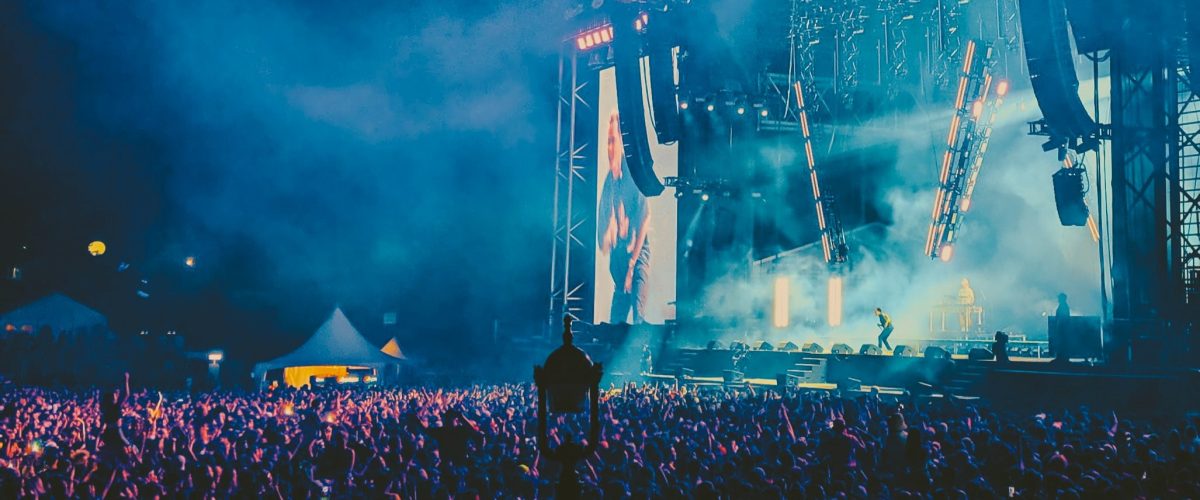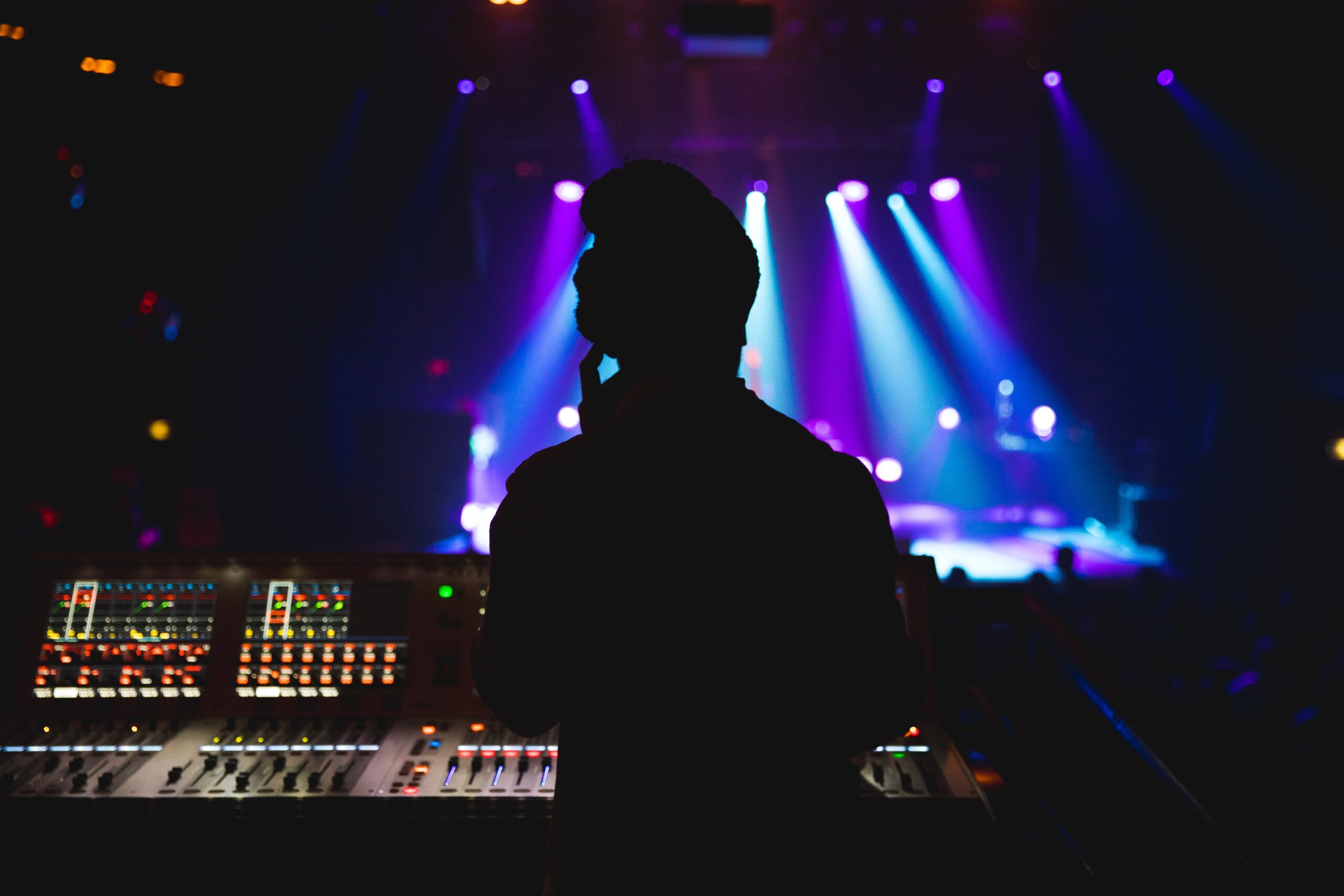Producing an outdoor concert or other types of festival entertainment requires dealing with a myriad of things involved before the performance can take place. The entertainers you book have both technical and hospitality requirements for their performance. The technical requirements become part of the local production needs for the event.
Local production are the elements required for the performance, typically staging, sound and lighting needs. Other local production elements that may be needed are backline, video wall, videography, photography, green rooms, etc. Hospitality issues also need addressed. They are transportation, lodging, catering, meet and greets and other things sought be the artists performing for your outdoor event. Those producing outdoor events will also need to address weather issues not only regarding local production, but also weather insurance.
This article will limit itself to key sound local production issues for outdoor events.
Local Production Issues for Outdoor Events Starts with the Right Production Team
Depending on the size of your outdoor event, you will need a “Producer” all the way up to a full production team. The latter involves selecting an experience entertainment agency who can provide the resources needed for outdoor concerts or festival events. TSE entertainment often provides a professional producer for many events to be the liaison between the client and artists, their tour managers, local production subcontractors, and others involved in carrying out the show.
The size of the local production team and the number of contractors will depend on the size of the event and how renown the talent performing at the event. Besides the producer, you the local production team members will include stage manager(s), lighting director, FOH sound engineer, Monitor sound technician, stagehands, security, runners, and those dealing with hospitality issues.
Outdoor Concert Events Have Different Issues Than Indoor Concert Events
For bands and singers, sound is the most important consideration for their performance. Their goal is to sound the best they can when they perform for such events. Live events are not like a recording studio where they can control how they sound to a very high degree with sound processing that corrects off key issues. That’s why many acts can never live up to their recording studio sound when playing live.
The good singers and musicians do live up to their billing by making sure their sound is engineered just right. To do that, more famous artists often bring their own sound engineer and sound mixing board to their events, outdoor on indoor.
The goal for local production for sound is for the audience to hear the performance clearly based on the venue’s acoustic properties, audience size and the scale of the event.
Audio Setup for Outdoor Concerts and Festivals
Setting up a sound system for an outdoor event requires taking into consideration a range of strategic and technical elements when planning the audio components of such an event.
They are based on coverage requirements and the size and nature of the venue. While the input side of the sound system may likely be the same for different size events, the output side (amplifiers and speaker system will vary greatly by the coverage requirements, size of audience and the acoustic properties of the venue.
An advantage of outdoor concert audio is that they usually take place in a relatively open space. This eliminates needing to tweak the audio for reflections found in indoor venues and results in better audio quality. The downside is that because of the outdoor environment you will need a more powerful audio system to cover the same area without structures to help amplify the audio signal.
For an acoustic or for genres where bass and kick drum aren’t key in front of an audience of a couple of hundred people, your audio setup can be as simple as two full-range speakers and a mixer set up Smaller bands will often carry this type of audio setup with them to events.
If your outdoor concert involves tens of thousands of people in the listening crowd, you will need a few more speakers. Actually, as many as 40 or more!
The Four Most Important Specifications for Audio Setup for Outdoor Concerts
The most important specs to know are speaker:
- Frequency Response,
- Amplitude or Sound Pressure Level (SPL)
- Dispersion
- Equalization (EQ)
Frequency Response:
Frequency measures the number of sound vibrations in one second. It’s measured in Hertz (Hz). This relates to how low or high pitched the vibrations are. The more the vibrations (measured in Hertz), the higher the pitch the sound is. We use both Hz and KHz (1000 Hertz) to show frequency ranges.
We hear by sensing the vibrations generated by sound waves in the air or other environments. The middle and inner ear translate these air vibrations into signals our brains can interpret. The normal human hearing frequency range is 20 Hz to 20,000 Hz or 20 kHz. This is the range for a healthy young person. The younger you are the better you hear. Infants can actually hear frequencies slightly higher than 20 kHz. As we age, we lose hearing first from the upper frequencies. A middle-aged man is more likely to have an upper range around 14 – 17 KHz range.
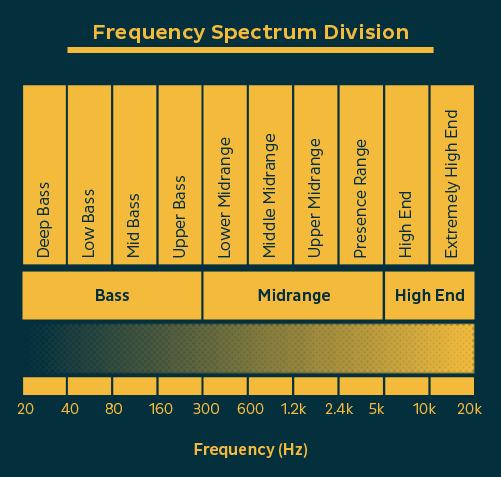
Children under 13 are even more susceptible to hearing issues with loud noise. It’s very important that hearing protection measures be taken for this group when exposed to high leisure sound levels.
Note: Younger children, those under 13, are more sensitive to sound because they have better hearing than adults.
A full range speaker has a frequency response of 60 Hz to 18 KHz and is fine for many musical instruments and genres of music. For genres where the kick drum and bass are key, you will need subwoofers for the additional punch required. Subwoofer extends the frequency response down to 45 Hz or lower and will allow the full-range speakers additional headroom and increased output. For bands using a five or six string bass, the subwoofer speakers may need frequency responses down to 31 Hz.
Sound Pressure Levels (SPL) or Amplitude:
Amplitude measures a sound’s pressure or forcefulness. The more amplitude a sound or noise has, the louder it is. We often refer to this as gain or volume. The unit of measure of sound pressure level is the decibel (dB). Decibels use a logarithmic scale. That means that as the number of decibels increase, the sound level increases rapidly or exponentially. We will confine the use of the decibel to sound pressure levels although it is used to measure the intensity of other things as well.
While the “normal” hearing audible amplitude range of a healthy young person is from 0 to 180 dB, anything over 85 dB has the potential to damage hearing depending on the frequency and length of time exposed to those levels.
The logarithmic nature of the decibel scale means that a very large range can be denoted by a useful number. For example, every increase of 10 dB on the decibel scale is equal to a 10-fold increase in sound pressure level (SPL). Near silence is expressed as 0 dB. A sound measured at 10 dB is 10 times louder. If a sound is 20 dB, that’s 100 times louder than near silence. To recap, the difference is the sound coming out of a speaker at 90 dB is ten times louder than the sound coming out of a speaker at 80 dB! For example, 120 dB SPL may be clearer than “a trillion times more intense or louder than the threshold of hearing” at 0 dB.
A normal conversation is about 60 dB, a loud lawn mower may reach 90 dB and a loud rock concert can reach 120 dB or more. The effect of loud noise on hearing varies among people. The effect may vary by the frequency of sound to which they are exposed as well. In general, sounds above 85 dB are harmful, depending on how long and how often you are exposed to them. Such exposure may lead to hearing loss. Most occupational workplace noise regulations prevent employees from being exposed to noise greater than 85dB over the course of their workday. Leisure noise such as concerts is less studied and regulated.
Many jurisdictions do have sound ordinances that regulate leisure sound exposure, including concerts and music festivals. They are based on the need to prevent hearing loss by those listening to the music.
Most jurisdictions that set sound guidelines do so to limit exposure to harmful noise. The guidelines vary but are based on an exposure limit over a period and a peak limit. The shorter the exposure time, the louder it can be. Indoor rock concerts will often average over 100 dBs for several hours and will have peaks at 130 Db. There is very little actual data about the sound exposure during outdoor music festivals, especially those involving multiple stages over several days.
Outdoor Concert Speaker Setup
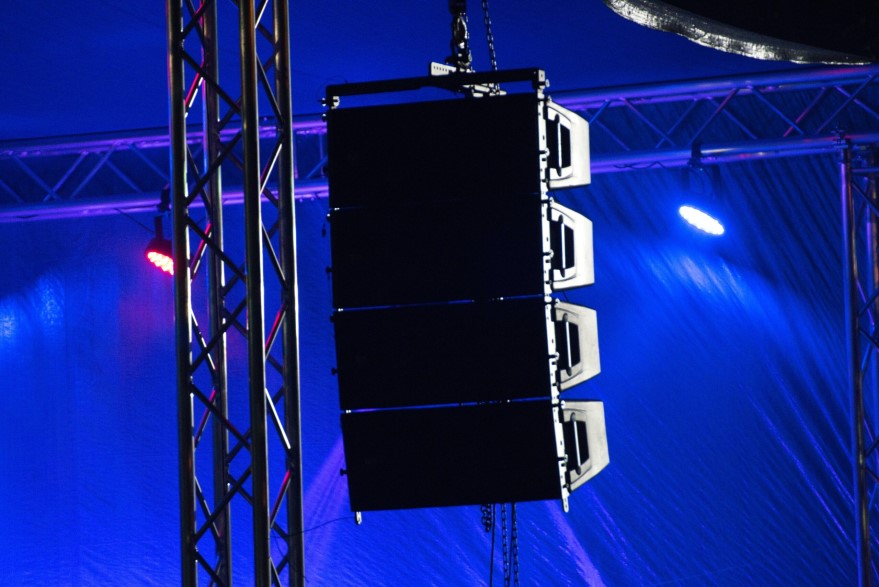
Speaker SPL
The sound pressure level (SPL) of a speaker is a measure of how loud the speaker is at a given distance. The sound pressure level will be reduced by 6 dB with the doubling of the distance from it. So, a speaker with 135 dB output at 1 meter would have an output of 129 dB at 2 meters and a 123 dB output at 4 meters and so forth. 1 Meter is used, because that is the standard for Maximum SPL of a speaker in the specification sheet. To maximize the SPL, you can add additional speakers. Each additional speaker will add 3 dB output. By adding another speaker to a 135 dB peak out speakers, you increased the output to 138 dB. In a nutshell, the SPL output and number of speakers will determine how loud the sound will be at various distances from them. Remember that practically speaking, a one dB power gain is approximately 26%; a 3 dB is roughly twice the power gain, and 10 dB is about ten times the power gain.
Speaker Dispersion
Dispersion is the direction the sound is projected horizontally and vertically from the speaker. Knowing the speaker dispersion is important to determine speaker placement. The goal is to provide coverage to the entire audience. Today’s speakers allow for many speakers to be placed together in a tight-knit group or array, which allow for coupling with reduced interference between speakers.
The vertical dispersion of the speakers will determine how high the full-range speakers will need to be to provide the right sound coverage for the audience. There are several ways to configure the height needed for coverage including stacking speakers, utilizing speaker stands or scaffolding, or using trussing to achieve the height required to provide needed coverage to the full audience.
The higher the speaker, the further the sound will travel. It it’s too high, there will be a loss of impact in the front as the sound goes over their heads. If the speakers are not high enough, the sound may be uncomfortable for the people immediately in the front of the stage.
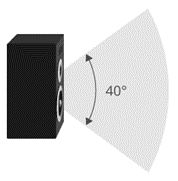
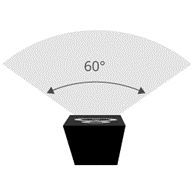
Equalization: Sound Mixing Console
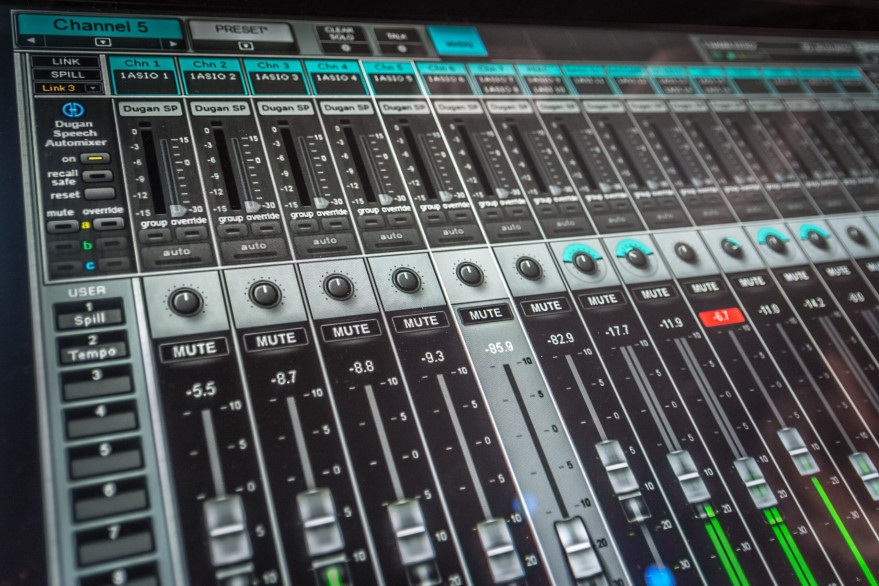
Most musical instruments and even human voices are defined by the range of notes they can make, thus, for instance, a female soprano is expected to be able to output maximum power (frequently also referred to as singing) in a certain pitch range This range corresponds to 262 Hz to 1047 Hz although some sopranos can go lower and higher than this range. So, if we want to pull out a soprano voice from the background these are frequencies we would concentrate on when equalizing. see here if you want to learn about frequency ranges of musical notes and instruments.
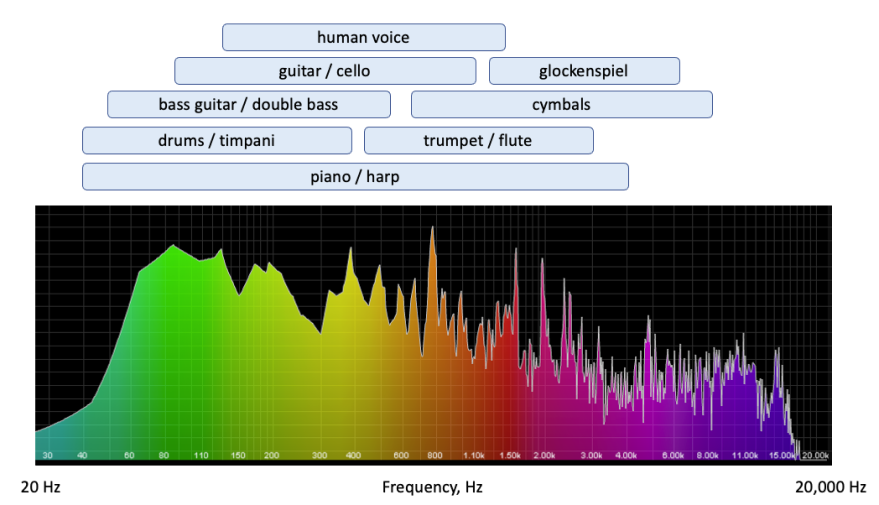
Equalization also is used to address problems such as problematic frequencies that can be annoying or clearing up the muddiness that occurs when instruments with overlapping frequencies clash with each other, making it difficult to perceive simultaneous sounds. The subject of equalization is much more complex than this introduction.
The front of house (FOH) equalizer or sound board has flexibility when it comes to placement. Generally, it’s placed between the speaker system so the FOH sound engineer can hear both speaker arrays equally. Some offset the console to the side of one of the speaker arrays to provide better viewing for the audience. The FOH mixing console should be placed from two to four times the distance from the stage as the distance between the speaker arrays. For example, if your speaker arrays are 50 feet apart, then the console can be placed between 100 and 200 feet above the audience so that the audience doesn’t block any of the sound from the sound engineer’s ears. The placement of the FOH console is also impacted by the type of music being mixed. For example, the console for a folk music performance will be placed closer to the stage than one for a heavy rock outdoor performance. Be aware that these are only guidelines, and you will find FOH mixing consoles at various locations at different events.
Factors to consider for your outdoor event to determine your audio setup needs:
- Size and nature of the performance space
- Expected attendance
- Sound ordinance restrictions
- Artist audio requirements and the type of music being performed
- Overall theme of your event (Is it a music-focused festival or is the music intended to be background noise? Etc.)
Factors to consider determining the level of PA an outdoor concert or festival should have:
- How far back from the stage do you need to hear the music?
- How many people do you expect to attend and how large of an overall crowd space will there be for the sound to be heard?
- Are you indoors where the sound is reflected off the walls? Or outdoors where it will freely go out until the sound wave disappears?
When setting up the FOH sound system for your outdoor concert or festival, having a basic understanding of these four key technical issues will allow you to better understand what the sound company you hired is doing . It also provides enough knowledge about the audio requirements for outdoor concerts and festival for you to oversee how the sound is being handled. After all, a concert is mostly about the sound!
